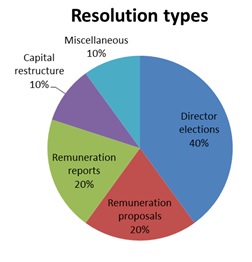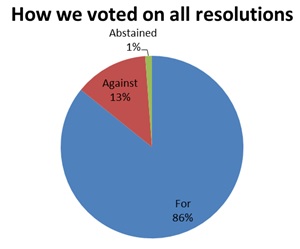ASIC has recently surveyed superannuation websites to check industry compliance with the new executive officer remuneration and systemic transparency disclosure requirements introduced as part of the Stronger Super reforms.
Transparency Information comprises executive remuneration disclosure and other information about super funds’ governance and must be publicly available on each super fund’s website. It is required by s29QB of the Superannuation (Industry) Supervision Act (SIS Act) and SIS regulations 2.37 and 2.38, introduced under Stronger Super reforms.
ASIC Commissioner Greg Tanzer said, 'Our survey indicated that superannuation trustees generally seem to have understood what was intended with these transparency reforms and have made a good effort to comply. The required information has been presented in a variety of ways.
'However, there were pockets of non-compliant trustees who appear to have struggled with the new requirements. In some instances we could not find any websites for funds', Mr Tanzer said.
ASIC recommends making a number of simple changes to websites to enhance disclosure of Transparency Information:
- make Transparency Information intuitively easier to find on the homepage by having a link on the homepage called, for example, “Transparency Information under SIS Act s29QB” or “SIS Act s29QB website information”,
- insert hyperlinks to the Transparency Information in one place or publish the Transparency Information itself in a dedicated part of the website,
- disclose the periods that executive officers (directors and senior managers) have served as board members, not forgetting senior managers who may previously have served as a director,
- only disclose a director’s remuneration as nil if they provide their services in a purely voluntary capacity,
- include voting summaries on international, not just Australian, listed shares,
- where the trustee’s policy is not to vote on listed shares, disclose that there is no voting summary (to avoid users looking for something not there), and
- where voting summaries comprise a table listing how votes were cast on specific resolutions, consider including an overview, like an executive summary. This might include showing overall voting by resolution type and simple graphics (e.g. pie charts).
'ASIC will follow up with trustees where we considered the disclosures to be insufficient or non-existent and reminds all trustees of their ongoing obligation to make transparency information publicly available and up to date at all times. Failing to meet these requirements is an offence', Mr Tanzer said.
The findings of ASIC's survey and further guidance on improving disclosure are contained in the attachment to this media release.
Background
Transparency Information comprises executive remuneration disclosure and other information about super funds’ governance and must be publicly available on each super fund’s website. It is required by s29QB of the Superannuation (Industry) Supervision Act (SIS Act) and SIS regulations 2.37 and 2.38, introduced under Stronger Super reforms.
Transparency Information is designed to make superannuation funds more accountable and transparent to the market, because they control large sums of money and is principally intended for analysts, journalists, financial advisers and other gatekeepers. Some consumers may find it helpful in making superannuation decisions.
Navigation to and location of the Transparency Information
On average, Transparency Information was three or four clicks away from the homepage. On occasions, it was difficult to find from the home page. The information could only be located using the site's search function or a generic search engine.
An example of a difficult pathway for a conglomerate with several trustees (where “>” symbolises clicking a hyperlink):
Scroll down to the site map at the bottom of the homepage > About us >
scroll down to Trustee details > Trustee documents > [Trustee name] > Remuneration disclosure.
Once one Transparency Information item was located, it was usually relatively easy to find the others.
ASIC encourages trustees to make Transparency Information intuitively easier to find when navigating from the home page.
This might be done by having a hyperlink on the homepage called, for example, something like: “Transparency Information under SIS Act s29QB” or “SIS Act s29QB website information”.
As a matter of best practice, ASIC encourages trustees to put hyperlinks to the Transparency Information in one place or the Transparency Information itself in one part of the website.
Timeliness
SIS s29QB requires Transparency Information to be up to date at all times. ASIC has specified how quickly websites must be updated in order to be ‘up to date at all times’ (see ASIC Regulatory Guide 252 Keeping superannuation websites up to date).
We found that in general, trustees are updating their websites on time.
We observed a website that publishes a list of current executive officers (directors and senior managers) every October and April. When the trustee appointed a director in January, the website did not record this until April, more than the 20 business days allowed.
Websites should be regularly reviewed and frequently updated to comply with s29QB timeframes.
Senior manager positions identified as executive officers
SIS s29QB requires super websites to disclose the remuneration of executive officers of the trustee of the superannuation fund. Executive officers comprise trustee directors and senior managers.
Trustees appear to have readily followed ASIC guidance on which senior managers are executive officers (Stronger Super FAQ D1).
Position titles of senior managers whose remuneration was disclosed include: Chief Executive Officer, Deputy CEO, Chief Investment Officer, General Counsel & Company Secretary, Chief Risk Officer, Chief Financial Officer, Chief Actuary, Fund secretary, Executive Manager (EM) Administration & Insurance, EM Member Advice, General Manager (GM) Strategic Relations, GM Marketing & Communications, GM Information Systems and Head of Infrastructure.
Periods served on boards
Websites did not always set out the periods that executive officers (directors and senior managers) had served on boards [see reg 2.38(2)(j)].
Some sites disclosed the periods of board service for directors but not for those senior managers who had previous board experience.
Nil remuneration
Except where a director carries out director services in a purely voluntary capacity, for example, in their own time after hours or while on annual leave, ASIC considers that the website should disclose the director’s remuneration as a positive, not nil, amount. Our recently revised Stronger Super FAQ D4 provides further guidance.
Disclosure of executive remuneration paid to other organisations
Trustees who pay amounts to another organisation, instead of paying it directly to the executive officer, generally disclose the amount against the executive officer’s name and use an annotation or footnote to record that it was paid to the organisation.
ASIC regards this as an appropriate way of giving effect to SIS reg 2.37(1), Item 16.
Disclosure of executive remuneration in bands
A few trustees disclosed executive officer remuneration in bands. In the superannuation context, remuneration must be disclosed at an individual trustee or executive officer level and not in bands.
Voting on listed shares
Superannuation trustees are required to summarise how they voted in relation to shares in listed companies during the last financial year (under reg 2.38(2)(o)).
Some trustees did so only for shares in Australian listed companies but others also disclosed how they voted in relation to listed international companies.
ASIC's view is that trustees should summarise how they voted in relation to Australian and international listed companies.
No voting policy
If the trustee’s policy is not to vote in relation to listed shares held by the superannuation fund, we think it desirable that the super fund’s website explicitly say that there is no voting summary (to avoid users looking for something that is not there).
Voting summaries
There is a variety of practice in relation to voting summaries.
Nearly all funds have a table listing the resolutions in abbreviated form, grouped by listed company showing how they voted (e.g., for, against or abstain).
In addition, the best voting summaries also provided an overview of the way the trustee voted. Example 1 below is a basic example of such an overview. We encourage super websites to include such overviews.
Example 1 for SuperSTAR Fund
In the period we voted as shown in the table below.
|
Category |
For |
Against |
Abstain |
Total |
|
Director elections |
300 |
90 |
10 |
400 |
|
Remuneration proposals |
190 |
10 |
0 |
200 |
|
Remuneration reports |
180 |
20 |
0 |
200 |
|
Capital restructure |
95 |
5 |
0 |
100 |
|
Miscellaneous |
93 |
5 |
2 |
100 |
|
Total |
858 |
130 |
12 |
1000 |
The chart below shows that 40% of the resolutions we voted on related to director elections, 20% remuneration proposals, 20% remuneration reports, 10% capital restructures and 10% miscellaneous (including auditor appointments and changes to company constitutions).

The chart below shows that we voted for 86% of the resolutions, against 13% and abstained in 1%.

Significant event notice (SEN) summaries
Super websites are required to include a summary of SENs issued to members in the last two financial years.
We found that super trustees are using the model suggested by ASIC in Stronger Super FAQ D2 or have adapted it in a way that suits them.